Copper Facts
Reclamet Limited
View ALL WASTE SERVICES
Reclamet Limited
View ALL WASTE SERVICES
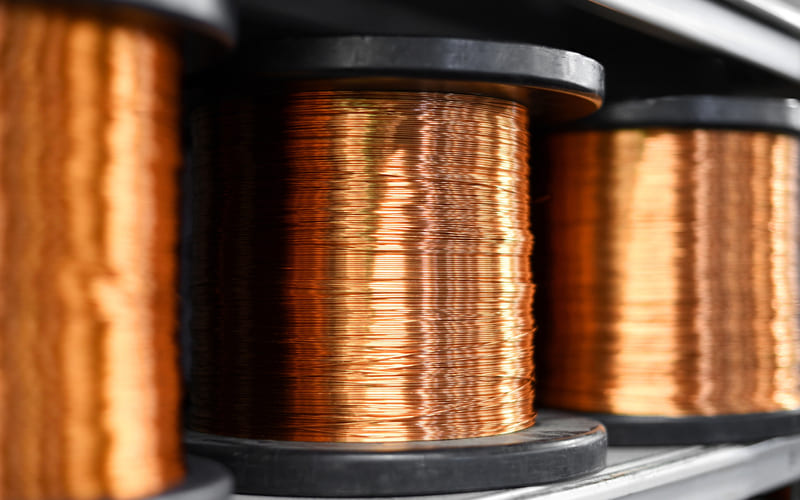
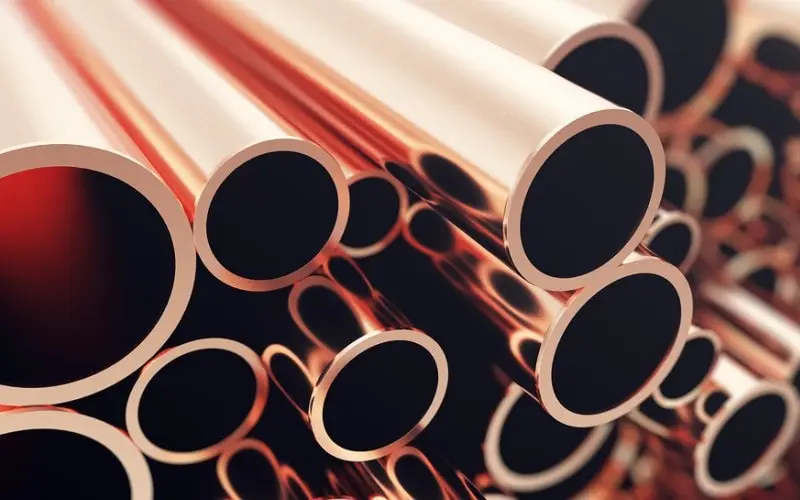
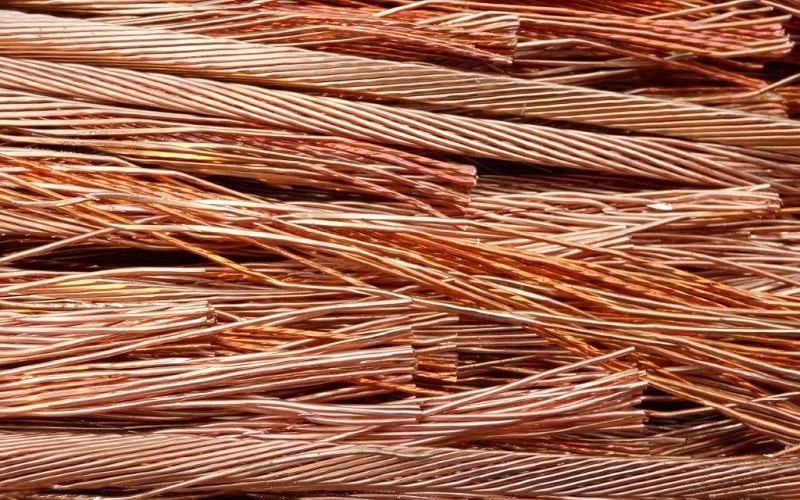


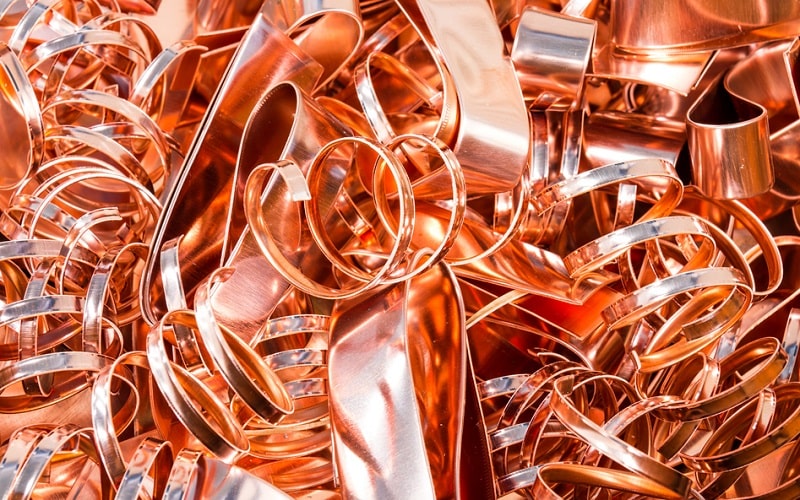
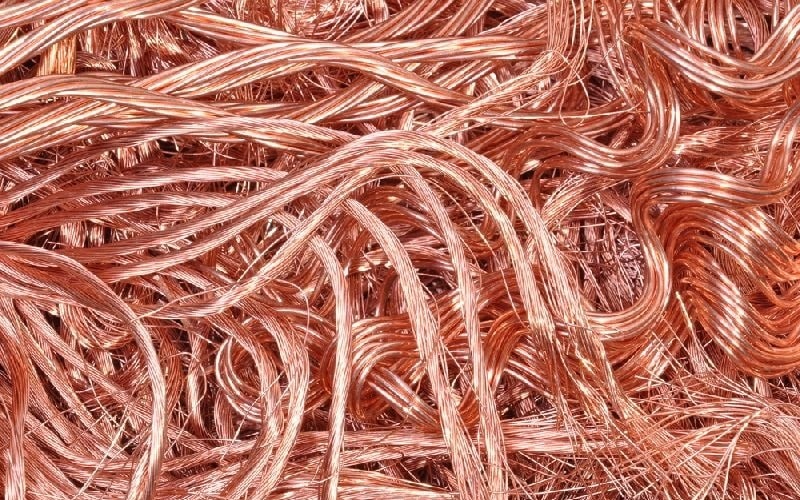



Facts About Copper
- Copper is an element and a mineral essential to our everyday lives.
- Copper is a primary industrial metal because of its high malleability, ductility, electrical and thermal conductivity and resistance to corrosion.
- Copper is corrosion-resistant.
- Copper is an essential nutrient in our daily diet.
- Copper has antimicrobial properties and can help prevent infection.
- Copper’s element number is 29 on the periodic table.
- Copper is classed as a nonferrous, malleable, semi-precious metal.
- Copper is used in electronics, electricity, plumbing, architecture, construction, transportation, industry, health and consumer products.
- Copper in its pure form has a melting point of 1,981°F (1,083°C, 1356°K).
- Copper’s important properties include electrical conductivity, corrosion resistance and superior heat transfer, electrical.
- Copper has more than 570 alloys and can be easily alloyed with other metals.
Facts About Copper Alloy
- Bronze and brass are the most well-known copper-based alloys.
- Brass is mainly zinc and copper.
- Bronze is primarily copper mixed with aluminium, tin, beryllium or silicon.
- Leaded yellow brass, also known as copper alloy 360, is very easy to machine.
- Leaded yellow brass is the benchmark standard for machinability when working with metals.
- Brass is the standard alloy used when making instruments such as watches, navigational aids and clocks.
- Brass pins, when rust-free, were used in very early wool-making tools.
- Brass is used for decorative gold-coloured products.
- Bronze is far more resistant to corrosion and more rigid than pure iron.
- Bronze is also harder than pure copper. Egyptians used bronze for armour, weapons, sculptures and tools.
- Bronze expands when heated and is well suited for sculptures.
- Bronze contracts as it cools, making sculptures easy to remove from moulds.
- Bronze, which contains about 20-25 per cent tin, is called bell metal.
- Bronze with a tin content under 10 per cent and a mixture of lead and zinc is called statuary bronze.
- Other copper alloys include copper-nickel-zincs and copper-nickels. There are many different alloys also.
Historical Facts About Copper
- Dating back more than 10,000 years, copper is the oldest metal used by humans.
- Neolithic man first used copper as a substitute for stone.
- Copper metallurgy emerged in Egypt around 4000 B.C. when copper was heated and cast into shaped moulds.
- In the Bronze Age, around 3500 B.C., copper was first alloyed with tin to create bronze, hence the name “Bronze Age”.
- The word copper originated from the words aes Cyprium, meaning “metal of Cyprus” by the Romans.
- Aes Cyprium was shortened to cyprium, then changed to cup rum, and after that, it became known as copper in English.
- Many everyday items in ancient Egypt were made of copper, including water vessels, razors, hand mirrors and chisels.
- Copper chisels were used to smooth the limestone blocks of the Great Pyramids.
- Copper was also influential in agriculture; hoes and picks used to harvest crops were made of copper.
- Greek soldiers wielded bronze weapons and wore bronze armour.
- Egyptians performed medical operations with instruments made of copper alloy.
- Food was cooked and served in brass or bronze kitchenware in ancient times.
- Bronze mirrors allowed people of high stature to admire themselves and their jewellery.
- Coins, made of copper and alloys, were used by early traders and world travellers and are still used today.
- Ornamental and ceremonial objects use annealing and hammering, a heating and cooling process to soften and temper metal.
- Cave dwellers from 10,000 years ago used copper tools to survive and copper axes as weapons.
- Mayans, Aztecs and Incans commonly used copper alloyed with silver and gold when they reigned over South and Central America.
Natural Resource Facts About Copper
- Copper is a valuable and essential metal, with estimated resources of more than 8.1 trillion pounds. Only 1.1 trillion pounds have been mined so far in history.
- Copper’s recycling rate is higher than any other engineering metal, and the vast majority that has been in mind is still in circulation.
- Post-consumer scrap, such as discarded automobile radiators, electric cables, and air conditioners, equates to nearly 50% of all recycled copper.
- The remainder of recycled copper is new scrap, such as turnings, chips and offcuts from screw machine production.
- Other sources of reclaimed copper include electrical plumbing tubes, wiring, automobile radiators, cartridge cases and production scrap waste.
Communication Facts About Copper
- Structured wiring using twisted pairs of copper wire can transfer data between computers at speeds up to 10 gigabits per second.
- Copper lines enable telephone companies to offer low-cost networking and communication options using High-Speed Digital Subscriber Line (HDSL) and Asymmetrical Digital Subscriber Line (ADSL) technologies.
- Copper wires allow data and voice transmissions to run simultaneously on phone wires.
Electrical Facts About Copper
- The standard electricity benchmark is copper, which conducts electrical current better than other metals except for silver.
- Copper is commonly refined to 99.98% purity before it is approved for many electrical applications.
- Connectors are required for the flow of electricity, and copper is the favoured material for conductors and high current distribution for power or data and telecommunication “signal’ level currents.
- When used in electric power generators, copper-wound stators and rotors convert mechanical energy into electric current.
- Copper is used to deliver wind energy because of its low electrical resistance, high conductivity, and resistance to corrosion.
- Die-cast copper rotors in electric motors have been manufacturers’ “holy grail” for many years.
- SUVs and hybrid cars use copper-wound induction motors that draw power from batteries.
- Larger buses and hybrid trucks can be equipped with motors using highly efficient copper rotors when road-tested copper rotors reduce fuel costs by more than a third.
- Copper rotor motors are used in the world-renowned Tesla all-electric vehicles.
- Copper provides the matrix in the superconductors used in Switzerland’s CERN Large Hadron Collider.
- Copper is a heat exchange medium in hot water systems and solar heating.
Plumbing Facts About Copper
- Copper tubing was found in the Pyramid of Cheops plumbing system in Egypt and was dated to be more than 5,000 years old.
- Copper tubing is a significant application for fuel gas, and it is becoming more common for home builders to use high-pressure lines. Copper tubing is the most cost-effective way to connect ranges, gas ovens, water heaters, fireplaces, outdoor barbecues, clothes fryers, and propane or natural gas supplies.
- Metal manufacturers introduced a new lightweight yet durable drawn copper tube around 1927; it could be quickly soldered together with other copper fittings.
- Copper tubing is the standard material for indoor water systems in homes today.
Consumer Products Facts About Copper
- The oldest musical instruments were made with copper alloys.
- The largest swinging bell is the “World Peace Bell.” It’s 12 feet high, 66,000 pounds, and made from “bell bronze.”
- In the 17th century, brass became the preferred material for mechanical clocks because it worked efficiently and was corrosion-resistant. Before that, iron was the preferred material.
- Copper and its alloys are widely used for coffins, plaques, vaults and cremation urns because of their non-corrosive and durable properties.
- Copper vessels are used to distil liquor and brew beer. This helps keep the distillate sweet by removing unpleasant-tasting sulfur-based compounds from the alcohol.
Call Reclamet, the copper recycling specialist you can rely on.
Call: 01843 800800
Email: enquiries@reclamet.co.uk

Facts About Copper
- Copper is an element and a mineral essential to our everyday lives.
- Copper is a primary industrial metal because of its high malleability, ductility, electrical and thermal conductivity and resistance to corrosion.
- Copper is corrosion-resistant.
- Copper is an essential nutrient in our daily diet.
- Copper has antimicrobial properties and can help prevent infection.
- Copper’s element number is 29 on the periodic table.
- Copper is classed as a nonferrous, malleable, semi-precious metal.
- Copper is used in electronics, electricity, plumbing, architecture, construction, transportation, industry, health and consumer products.
- Copper in its pure form has a melting point of 1,981°F (1,083°C, 1356°K).
- Copper’s important properties include electrical conductivity, corrosion resistance and superior heat transfer, electrical.
- Copper has more than 570 alloys and can be easily alloyed with other metals.
Facts About Copper Alloy
- Bronze and brass are the most well-known copper-based alloys.
- Brass is mainly zinc and copper.
- Bronze is primarily copper mixed with aluminium, tin, beryllium or silicon.
- Leaded yellow brass, also known as copper alloy 360, is very easy to machine.
- Leaded yellow brass is the benchmark standard for machinability when working with metals.
- Brass is the standard alloy used when making instruments such as watches, navigational aids and clocks.
- Brass pins, when rust-free, were used in very early wool-making tools.
- Brass is used for decorative gold-coloured products.
- Bronze is far more resistant to corrosion and more rigid than pure iron.
- Bronze is also harder than pure copper. Egyptians used bronze for armour, weapons, sculptures and tools.
- Bronze expands when heated and is well suited for sculptures.
- Bronze contracts as it cools, making sculptures easy to remove from moulds.
- Bronze, which contains about 20-25 per cent tin, is called bell metal.
- Bronze with a tin content under 10 per cent and a mixture of lead and zinc is called statuary bronze.
- Other copper alloys include copper-nickel-zincs and copper-nickels. There are many different alloys also.
Historical Facts About Copper
- Dating back more than 10,000 years, copper is the oldest metal used by humans.
- Neolithic man first used copper as a substitute for stone.
- Copper metallurgy emerged in Egypt around 4000 B.C. when copper was heated and cast into shaped moulds.
- In the Bronze Age, around 3500 B.C., copper was first alloyed with tin to create bronze, hence the name “Bronze Age”.
- The word copper originated from the words aes Cyprium, meaning “metal of Cyprus” by the Romans.
- Aes Cyprium was shortened to cyprium, then changed to cup rum, and after that, it became known as copper in English.
- Many everyday items in ancient Egypt were made of copper, including water vessels, razors, hand mirrors and chisels.
- Copper chisels were used to smooth the limestone blocks of the Great Pyramids.
- Copper was also influential in agriculture; hoes and picks used to harvest crops were made of copper.
- Greek soldiers wielded bronze weapons and wore bronze armour.
- Egyptians performed medical operations with instruments made of copper alloy.
- Food was cooked and served in brass or bronze kitchenware in ancient times.
- Bronze mirrors allowed people of high stature to admire themselves and their jewellery.
- Coins, made of copper and alloys, were used by early traders and world travellers and are still used today.
- Ornamental and ceremonial objects use annealing and hammering, a heating and cooling process to soften and temper metal.
- Cave dwellers from 10,000 years ago used copper tools to survive and copper axes as weapons.
- Mayans, Aztecs and Incans commonly used copper alloyed with silver and gold when they reigned over South and Central America.
Natural Resource Facts About Copper
- Copper is a valuable and essential metal, with estimated resources of more than 8.1 trillion pounds. Only 1.1 trillion pounds have been mined so far in history.
- Copper’s recycling rate is higher than any other engineering metal, and the vast majority that has been in mind is still in circulation.
- Post-consumer scrap, such as discarded automobile radiators, electric cables, and air conditioners, equates to nearly 50% of all recycled copper.
- The remainder of recycled copper is new scrap, such as turnings, chips and offcuts from screw machine production.
- Other sources of reclaimed copper include electrical plumbing tubes, wiring, automobile radiators, cartridge cases and production scrap waste.
Communication Facts About Copper
- Structured wiring using twisted pairs of copper wire can transfer data between computers at speeds up to 10 gigabits per second.
- Copper lines enable telephone companies to offer low-cost networking and communication options using High-Speed Digital Subscriber Line (HDSL) and Asymmetrical Digital Subscriber Line (ADSL) technologies.
- Copper wires allow data and voice transmissions to run simultaneously on phone wires.
Electrical Facts About Copper
- The standard electricity benchmark is copper, which conducts electrical current better than other metals except for silver.
- Copper is commonly refined to 99.98% purity before it is approved for many electrical applications.
- Connectors are required for the flow of electricity, and copper is the favoured material for conductors and high current distribution for power or data and telecommunication “signal’ level currents.
- When used in electric power generators, copper-wound stators and rotors convert mechanical energy into electric current.
- Copper is used to deliver wind energy because of its low electrical resistance, high conductivity, and resistance to corrosion.
- Die-cast copper rotors in electric motors have been manufacturers’ “holy grail” for many years.
- SUVs and hybrid cars use copper-wound induction motors that draw power from batteries.
- Larger buses and hybrid trucks can be equipped with motors using highly efficient copper rotors when road-tested copper rotors reduce fuel costs by more than a third.
- Copper rotor motors are used in the world-renowned Tesla all-electric vehicles.
- Copper provides the matrix in the superconductors used in Switzerland’s CERN Large Hadron Collider.
- Copper is a heat exchange medium in hot water systems and solar heating.
Plumbing Facts About Copper
- Copper tubing was found in the Pyramid of Cheops plumbing system in Egypt and was dated to be more than 5,000 years old.
- Copper tubing is a significant application for fuel gas, and it is becoming more common for home builders to use high-pressure lines. Copper tubing is the most cost-effective way to connect ranges, gas ovens, water heaters, fireplaces, outdoor barbecues, clothes fryers, and propane or natural gas supplies.
- Metal manufacturers introduced a new lightweight yet durable drawn copper tube around 1927; it could be quickly soldered together with other copper fittings.
- Copper tubing is the standard material for indoor water systems in homes today.
Consumer Products Facts About Copper
- The oldest musical instruments were made with copper alloys.
- The largest swinging bell is the “World Peace Bell.” It’s 12 feet high, 66,000 pounds, and made from “bell bronze.”
- In the 17th century, brass became the preferred material for mechanical clocks because it worked efficiently and was corrosion-resistant. Before that, iron was the preferred material.
- Copper and its alloys are widely used for coffins, plaques, vaults and cremation urns because of their non-corrosive and durable properties.
- Copper vessels are used to distil liquor and brew beer. This helps keep the distillate sweet by removing unpleasant-tasting sulfur-based compounds from the alcohol.
Call Reclamet, the copper recycling specialist you can rely on.
Call: 01843 800800
Email: enquiries@reclamet.co.uk




